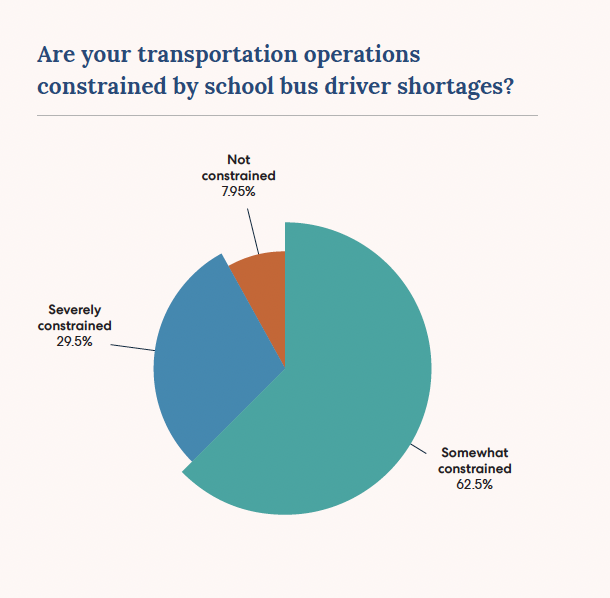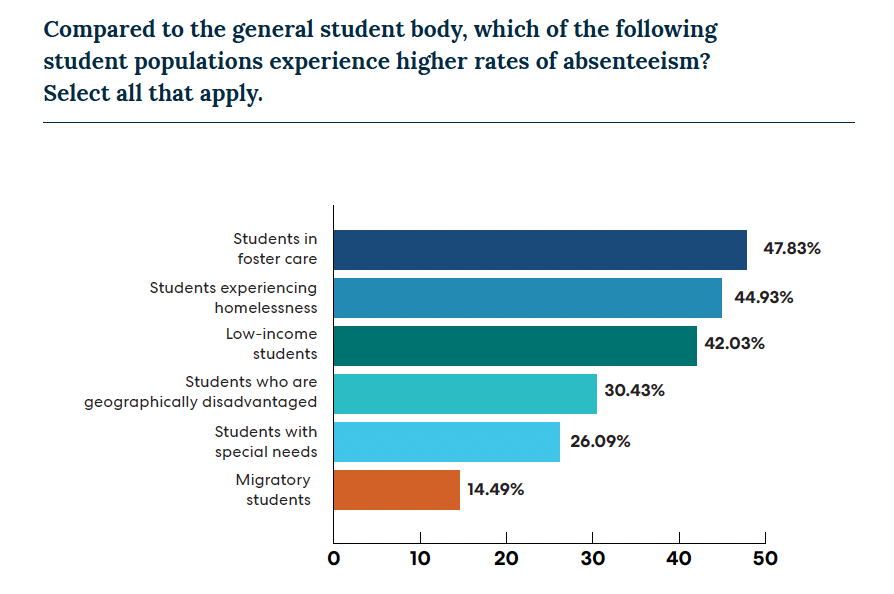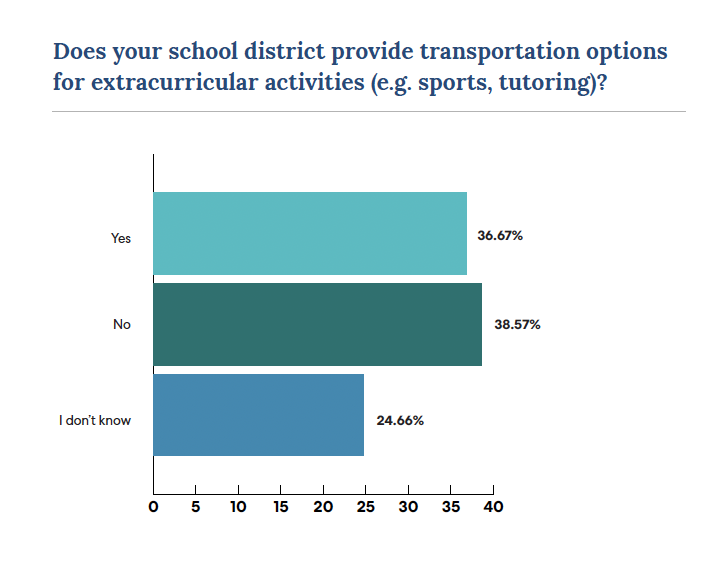Key takeaways from the 2023 State of School Transportation Report
The 2023 State of School Transportation Report reveals new insights from educators and transportation professionals. This year, we also collected input from parents and caregivers, to give a full picture of school transportation today.
We’re excited to highlight the key takeaways from the 2023 report, touching on educational equity, absenteeism, bus driver shortages, and the transportation challenges parents and caregivers face.
Bus driver shortages continue to challenge schools and districts everywhere
There are many reasons why consistent and reliable transportation proves difficult to secure for the entire student body. One of the key reasons is the ongoing bus driver shortage. The problem, which was only worsened by the COVID-19 pandemic, has shown no signs of letting up.
“We have offered signing bonuses, sent advertisement letters to parents, and parked a school bus around town with an advertisement for bus drivers on the side. School staff like teachers, coaches, and anyone who holds a CDL in the school system are driving to help with our shortage.”
—Robert Young, Transportation Director
How widespread is the shortage? 92% of this year’s survey respondents reported that the shortage constrained their operations. Respondents cited issues recruiting new bus drivers, losing drivers to private industry, increases in driver retirement, and insufficient wages as top reasons for the ongoing shortage.

Unfortunately, 40% of respondents said they have reduced transportation services due to the bus driver shortage.
“The driver shortage has been around as a whole for decades. Proactive districts began to employ alternative methods to counter this crisis. Using a small-vehicle vendor has been the key for the last five years.”
—Kimberly Raney, Executive Director, Procurement, Transport & Warehouse
Transportation is crucial to educational equity and solving chronic absenteeism
As in years prior, the State of School Transportation Report identifies current challenges that create barriers to educational equity. Of the district staff resurveyed for this report, 52% noted a link between access to transportation and educational equity.
Moreover, 67% of respondents reported that chronic absenteeism is an issue in their classrooms. Chronic absenteeism is defined as missing 15 or more days of a school year. There is a proven correlation between access to transportation and absenteeism, and 74% of survey respondents confirmed they see a direct link.
Respondents were also asked to identify which student populations experienced higher absenteeism rates compared to the general student body. The top three responses: students experiencing homelessness (69%), low-income students (62%) and students with special needs (46%).

Attending school regularly is critical for these already vulnerable populations. Consequently, it's no surprise that many respondents mentioned their ongoing focus on securing transportation for these students, who need it most.
“Students from target populations (foster youth, homeless, low-Income, etc.) are disproportionately impacted by transportation barriers. If you look at the intersection of these groups and race and income status, it is even more glaring.”
—Anonymous homeless liaison
Parents and caregivers are looking for more transportation options
For the first time this year, the State of School Transportation Report features insights provided by parents and caregivers. These responses can help us better understand the challenges parents and caregivers face in securing transportation for their children, and the consequences when they don’t have the transportation support they need.
We learned that nearly 75% of parents would place their children in more extracurricular activities or tutoring if the district provided transportation. Almost 80% of parents and caregivers wish school districts offered more transportation options.

Parents and caregivers also indicated that figuring out transportation and schedules for their children is the number-one challenge at the start of every new school year; 64% also report that they think about their child’s transportation multiple times a week or more. Moreover, 54% of respondents revealed that driving their children to school or another activity has caused them to miss out on professional opportunities.
“Without supplemental transportation, I may have lost my job. Public school transportation was unavailable due to a multitude of reasons.”
—Hans, Dad
For parents and caregivers of children with individualized education plans (IEPs), 65% indicated that ensuring individualized transportation options were available was noted as an extremely important or very important reason to choose a particular school.
Transportation truly matters
The main takeaway from the 2023 State of School Transportation Report is nothing new but it bears repeating: The way kids get to and from school has a direct impact on our kids, families, schools and communities. It matters for children with disabilities, it matters for children who are in the most vulnerable of situations — and its matters for children with plenty of resources, too.
We hope this year’s report not only shines a light on some of the biggest challenges faced by district staff, parents and caregivers but that it also reveals some areas of opportunity, where we can all work together to ensure all students have consistent, reliable and safe rides to school and anywhere else they need to be.
Gain more insights in to the state of school transportation in 2023 by reading the full report here.



